[This article contains spoilers throughout]
The ending to “The Love Bunglers” is but one ending among many in Jaime Hernandez’s Locas saga; all of them pretending to a certainty derived from an earlier age of innocence.
It is 1988 and Hernandez is writing and drawing the second part of “The Valley of the Polar Bears”. Hopey has left Maggie to go on tour with Terry’s band. Maggie has found new happiness in the arms of Ray Dominguez. They walk arm in arm into a happy future. The words of an imperfect prophet suggest that she could be coming to “the end of her whirlpool”.
She isn’t.
A few hundred pages on and it is 1996; the faithful reader now faced with the closing pages of “Bob Richardson”. Maggie and Hopey suddenly meeting for the first time in “years” at the back of a police car after a series of setbacks; finally together again as they once were 50 issues prior. The perfect ending.
Each of these moments as final as a relationship, wedding, or birth in our own lives; everything apt to be corroded by time.
These periodic assertions of finality are recapitulated in “The Love Bunglers”. Here old past times are recreated…
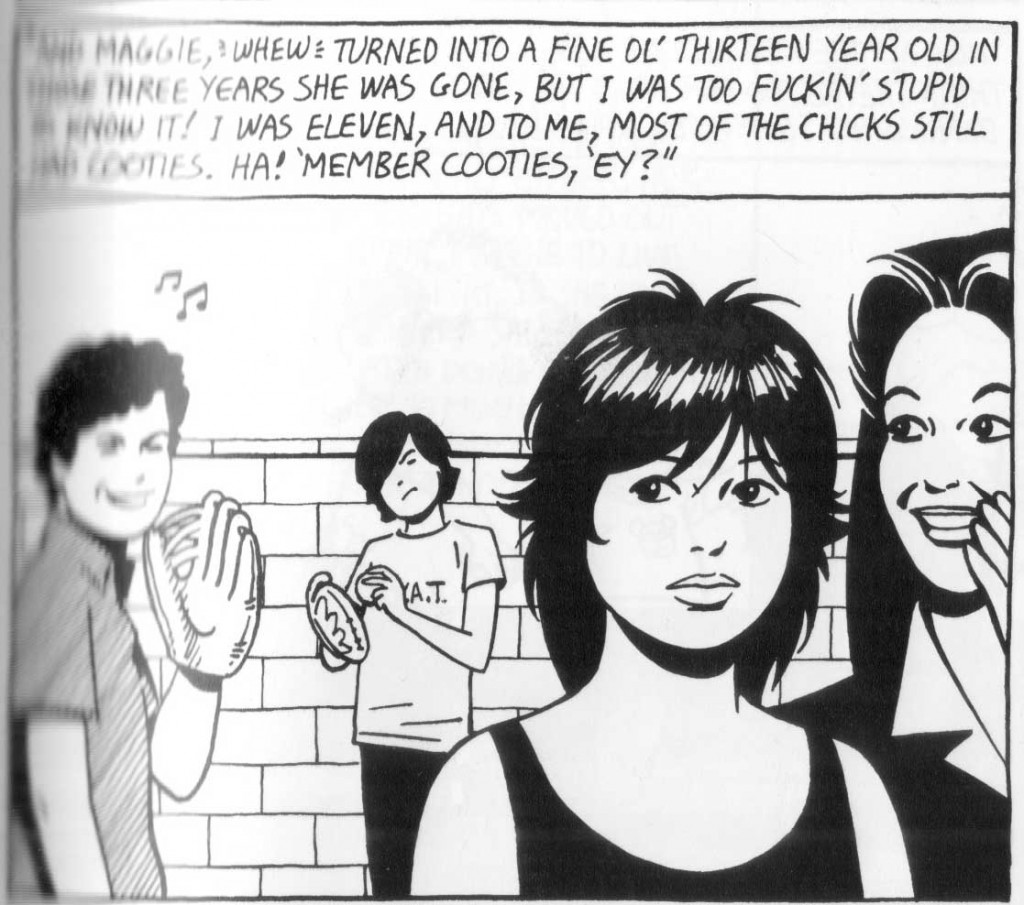 ___
___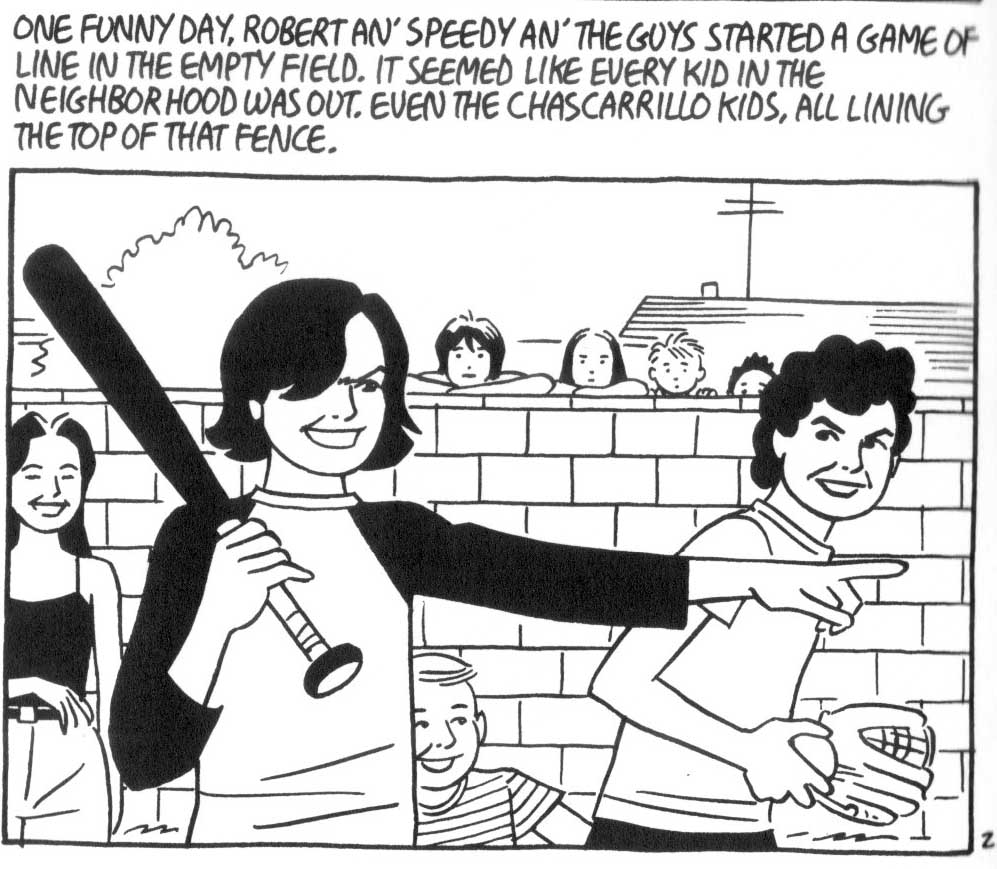
[1985 —> 2011]
…and ancient paths retread.
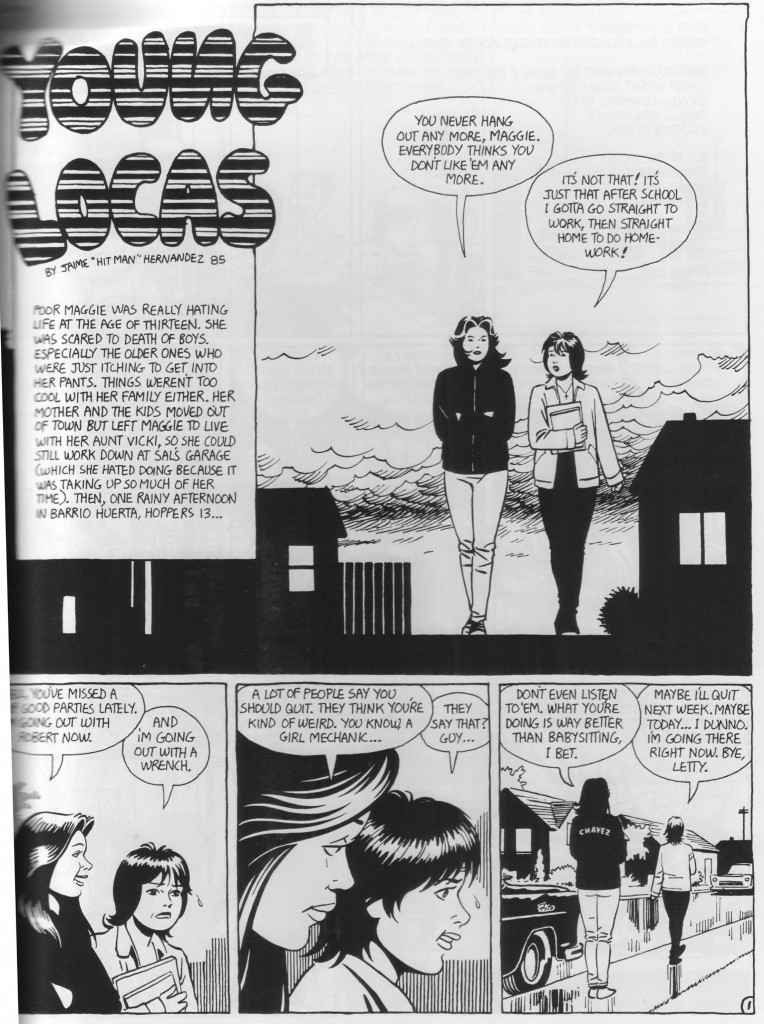 ___
___
[1985 —> 2011]
The pair of lovers (Maggie & Ray) stuttering, burning brightly, fizzling out, and then rekindled over the course of a few chapters and over 20 years of comics. If likened to a piece of music then a kind of ritornello with elaborations bordered by tuttis where the orchestra plays as one.
This symmetry is reflected in the construction of Jaime’s story and the positioning of “death” in between the story of the two lovers. The first is a kind of foreboding where Maggie’s brother, Calvin, traumatized by abuse, and with a mind to save his sister, beats his tormentor to a pulp. That figure is later seen tortured by obsessive ruminations over the validity of his actions; these thoughts now carried to their natural conclusion of eternal vigilance over his sister. He is a ghost walking the streets, lost in shadow but ever ready to reiterate the past and its tragedies. A personification of his sister’s own state of mind.
In the latter half of “The Love Bunglers”, Letty, Maggie’s childhood friend, becomes an unwitting sacrifice to that tragedy — first pushed into the background by Maggie’s despair at her father’s unfaithfulness and then slowly rebuilding an old bond with her friend. There is space enough to wonder why she has been thus displaced, whether this can be put down to Maggie’s new found wariness or simply her mother’s shame at the preceding events; now spreading like a disease through her family, all of whom are kept close to the nest in light of the recent affliction that has unfolded.
Both of these episodes present themselves as answers to Maggie’s insecurities, always alluded to at various points in Hernandez’s long running series but now brought to the fore. As Ray Dominguez lies bleeding on the ground towards the close of the story, his skull crushed by a brick wielded by Maggie’s deranged brother, Hernandez offers his readers an encapsulation of this pattern of self-flagellation. Ray’s vegetative thoughts of Maggie seguing into Maggie’s own recollections; a gentle push into reconstruction and reminiscence on the part of the author.
Panel 1. It is 1997 and Hernandez will soon be embarking on his much lauded homage to Charles Schulz in “Home School” — clean, elegant lines, wiry hair, and brick walls.
In “6 Degrees of Ray D. Ation”, Ray meets the young Maggie for the first time. There is a hammer hanging over Ray’s head held by a young Maggie, just as so many years later her brother will hold a brick over Ray. He is a willing victim, a deer caught in the headlights. She, his unwitting “scourge”.
Panel 2. Maggie moves back to Hoppers after her parents separate. A friendship is rekindled and Maggie emerges from her shell.
Panel 3. A pose which mirrors that at the end of “The Death of Speedy”.
The school year is coming to a close and Ray has managed to get an art scholarship and will be leaving town. Soon Letty will be dead, a crutch taken from Maggie.
Panel 4. “The Return of Ray D.” (1986). A moment between panels and between pages. Maggie has just been kicked out of her friend Danita’s house and has been wandering the cold streets at night. “Three-thirty in the morning an’ my bed is fifteen miles away…” Ray has been away for 3 years and they meet unexpectedly at a doughnut shop. He only recognizes her after the fact. Maggie remembers that she once started a rumor that they went out “cause I liked him. Like I liked Race…and Speedy…”
Panel 5. “The Death of Speedy Ortiz” (1987). Ray has just seen his friend, Litos, shot in the face, and he is sitting together with Maggie in a hospital. “Why are you the only sane person here?” she asks. A moment of quiet as Maggie rests on his blood stained shirt, and then she leaves him to meet Speedy who will be dead within moments.
Panel 6. A Mess of Skin (1987). Hopey has left Maggie to go on tour with Terry. Left to her own devices back in Hoppers, Maggie accidentally jumps into a car thinking it is driven by Doyle and sees that it is being driven by Ray. They hook up to Daffy’s consternation. All this before that joyful and ephemeral conclusion mentioned above.
Panel 7. Maggie is posing for Ray but she’s stiff and lifeless, finally delegating her duties to Danita who soon shacks up with Ray. It is the beginning of the end for the couple, all this belied by a strained smile, happily ignored by readers of the time hoping for a reunion with Hopey.
Panel 8. “Ninety-Three Millions Miles from the Sun”. The end of the affair. Maggie says a final goodbye to Ray before Hopey puts her through another trauma and she disappears for the duration of “Wigwam Bam”.
This before that other blissful and temporary end which closed the magazine sized issues of Love and Rockets. The end of an era. The magazine’s circulation dropping from its heydays, partly due to the Hernandez Brothers fascination with convoluted narratives, dead ends, and indefinite resolutions.
Panel 9. “Life Through Whispers”. Doyle meets Maggie for the first time in years, and he’s worried that she’s seen him with his new squeeze. We never see her expression until this moment. Her visage is a mask of stern resignation, so far from the girl that grew up in Hoppers, the demons still clinging to her soul. The memories of happier times now tainted by experience.The one time mechanical “prodigy” now doing maintenance in an apartment block.
Ray’s expression is filled with an unaccountable sadness, staring and not daring to speak. The heady days of youth now extinct, the colorful costumes of the past long forgotten, life settling into a predictable landscape of drab buildings, anonymous clubs and darkened streets. When Jaime demonstrates his love for the feminine form in one of Ray’s life drawing classes earlier in the story, the entire process is viewed with a sense of bemused distraction by Ray. It seems almost like a casting away of “youthful” ways, a disdainful glance at a game from another age. This is a bleak middle-aged, lower middle-class existence conveyed not by picturesque chaos but by Jaime’s increasingly somber environments and restrained linework. Nowhere is this spartan existence more visible than in “The Love Bunglers”, the artist’s expressive line held in check like the lowering of a narrator’s voice.
In the fourth to final page of “The Love Bunglers”, Maggie looks into the mirror having found out that Ray has been in a near vegetative state for almost 2 years — a direct reference to the two pages of retrospection that have preceded it. What happens in the moment between those two panels is, of course, a mystery.
Perhaps a moment of resolution; perhaps the desire to remember clearly everything that has gone on before. A clean slate from which to draw the best of memories and less of the pain. If Maggie’s problems can be placed down to her memories, then it might be said that Ray finally gets his girl because he has forgotten so much.
In the end, the attacker (that personification of psychological damage) is somehow forgotten. The author reasserting the points of connection between Maggie and Ray, tearing them down and then rebuilding them. Ray’s mind in a constant state of questioning, his memories containing real and feigned histories.
His lover’s face is placid, understanding, and yet indecipherable — the cartoonist inviting his readers to recall the couple’s years of bitter struggle, before accepting the lies of a pleasant but capricious present reality.
_________
This is part of an impromptu roundtable on Jaime and his critics.

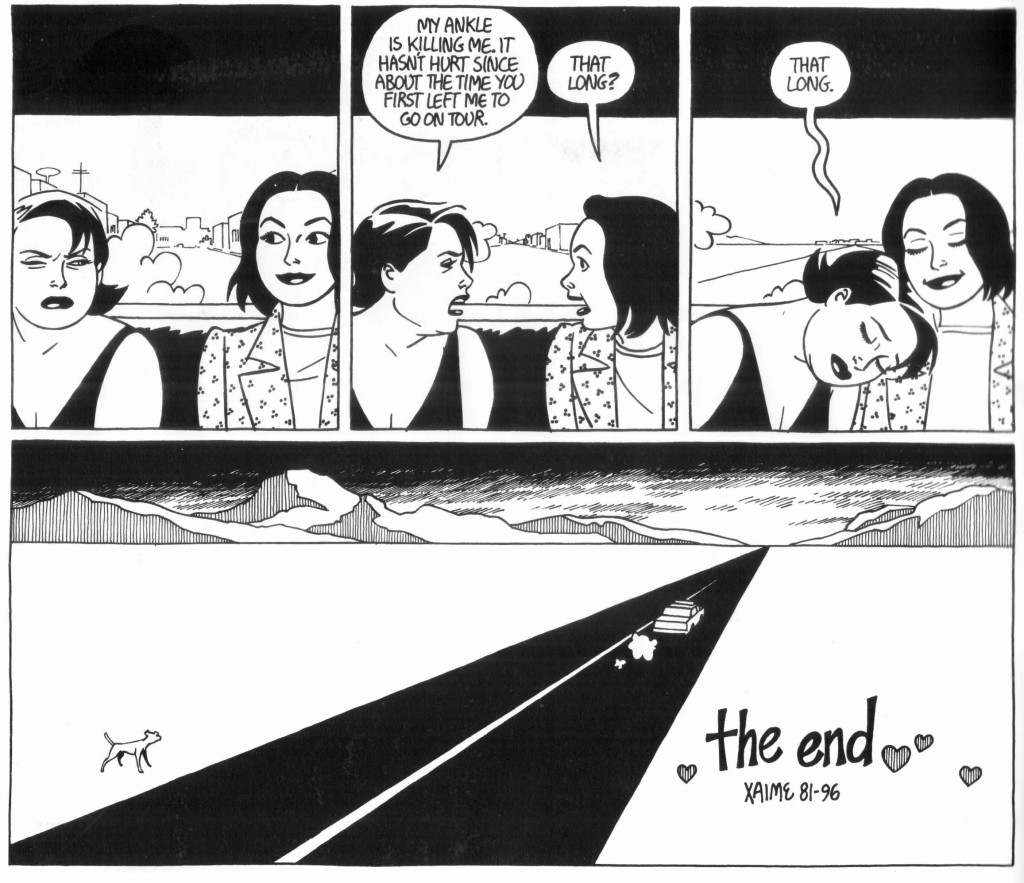

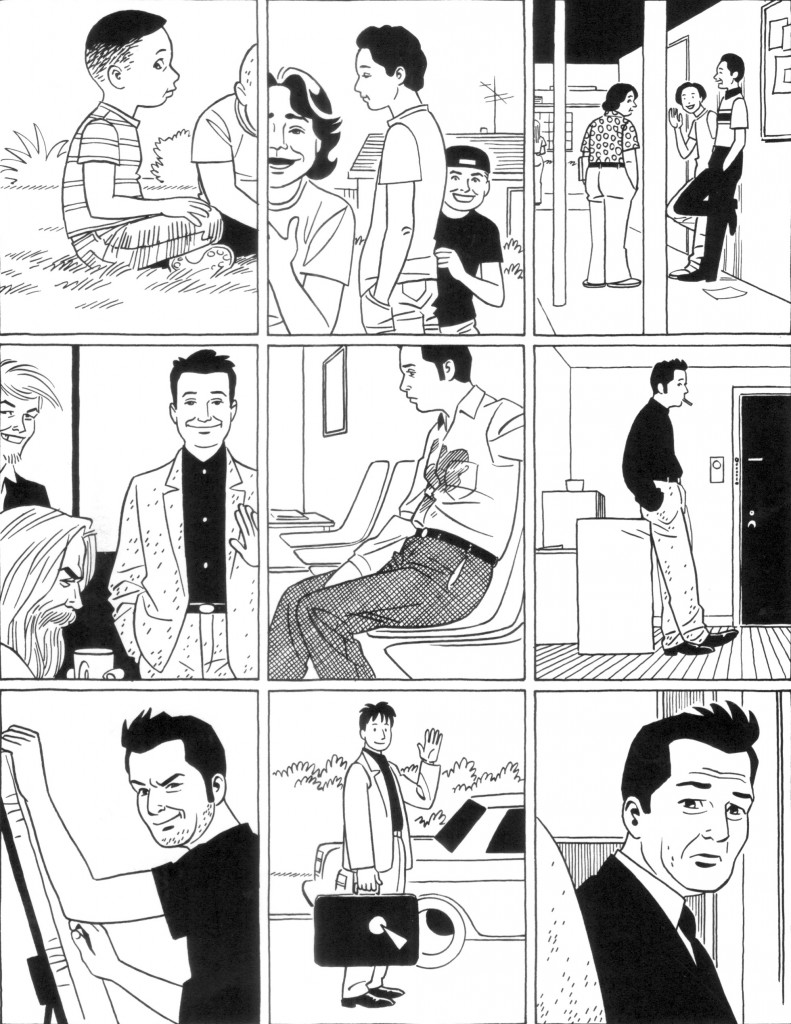
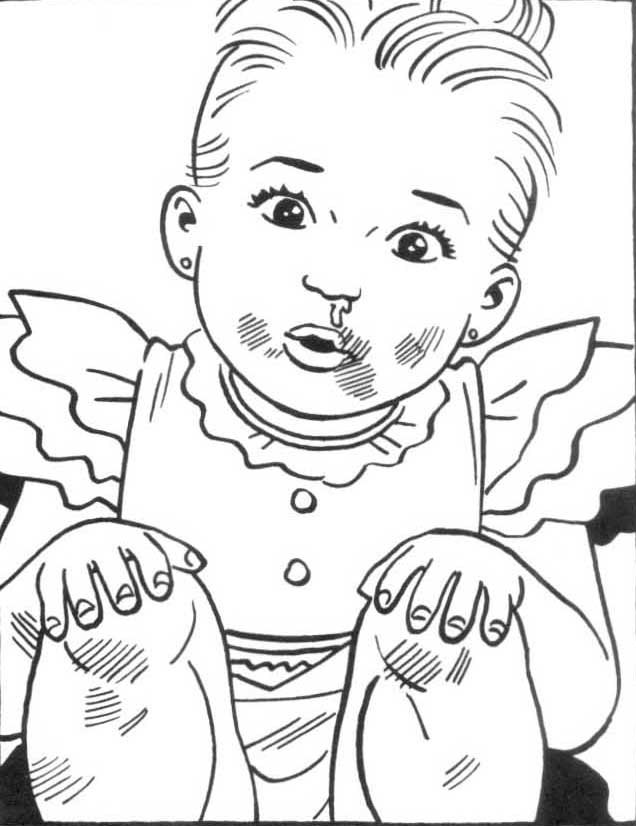

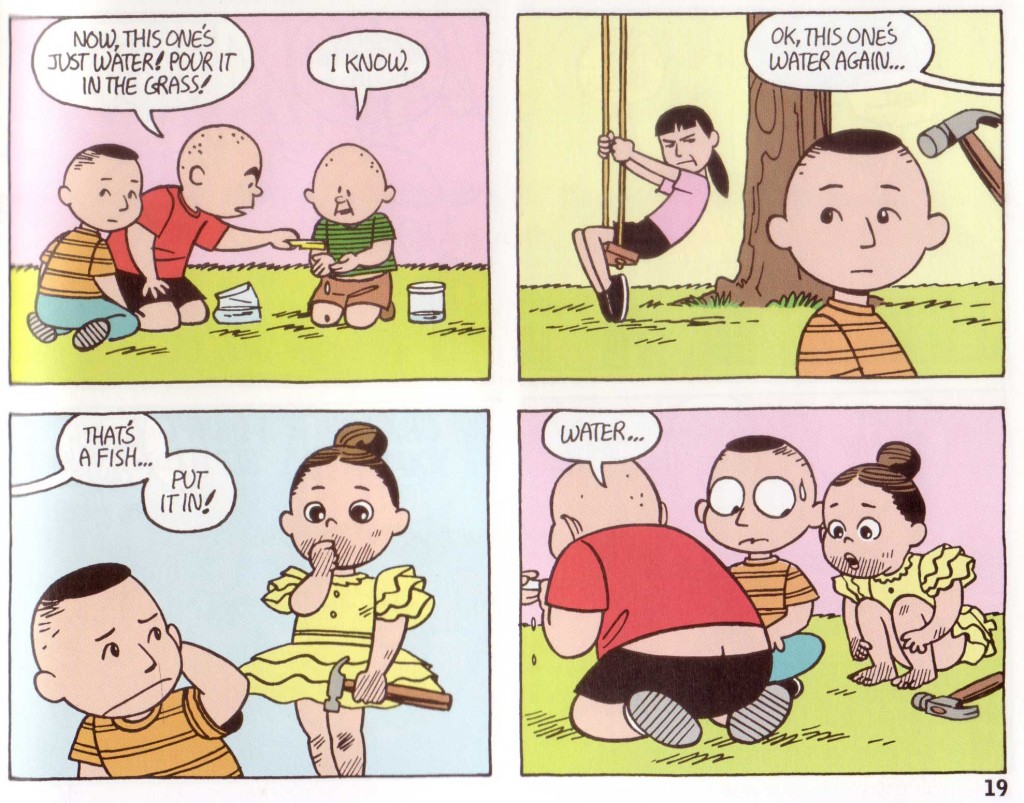

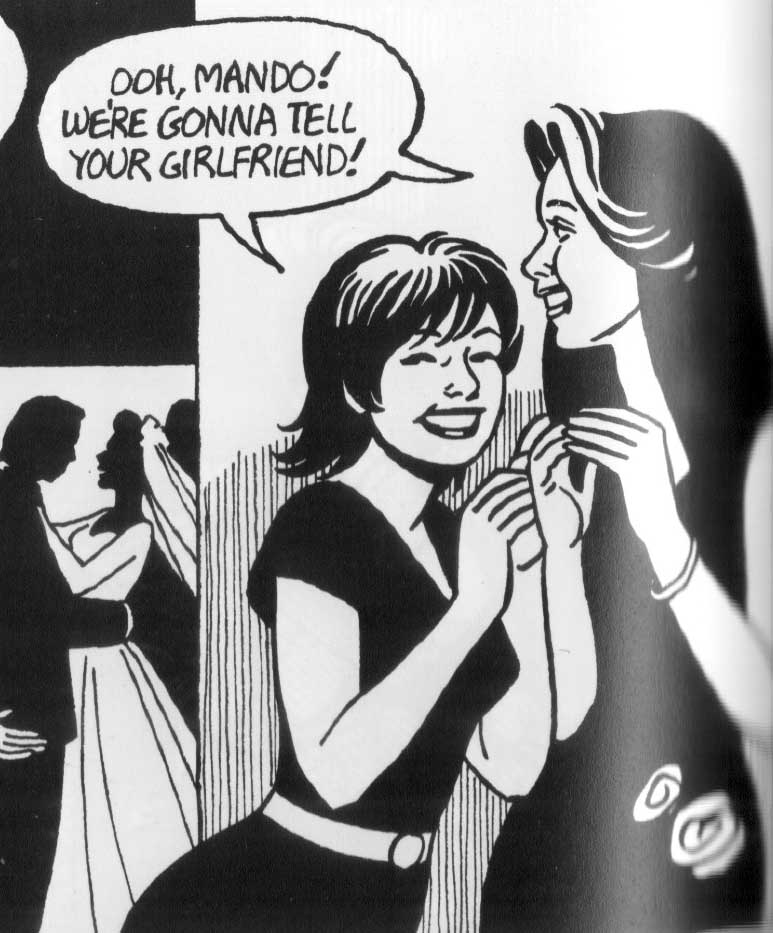

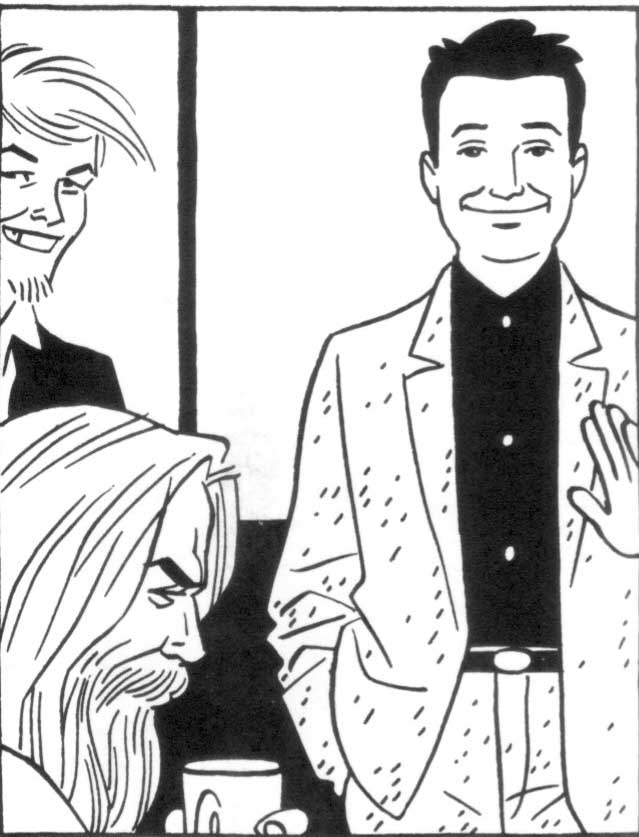
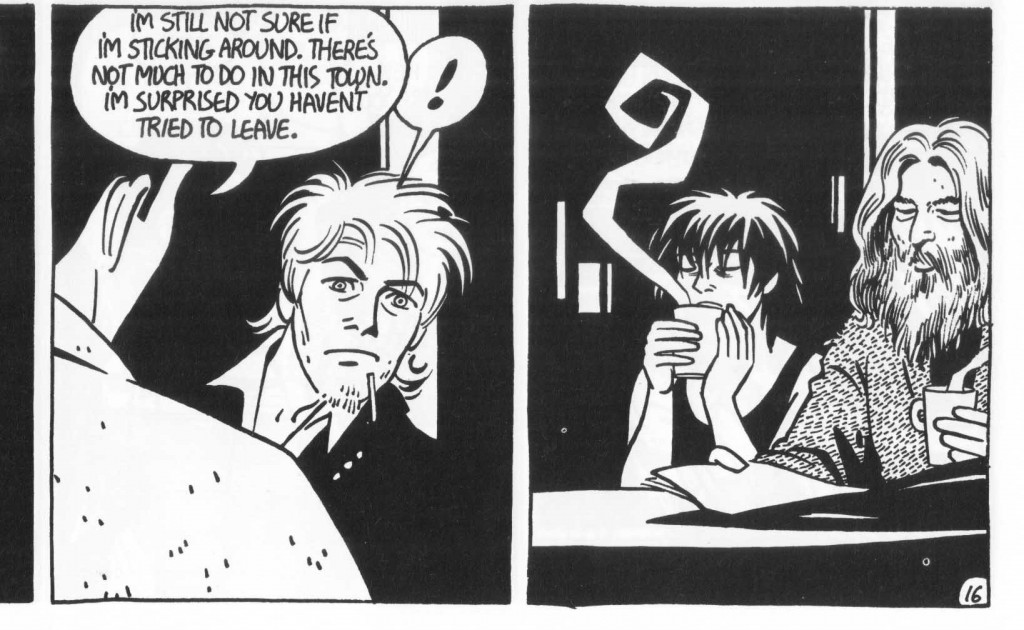
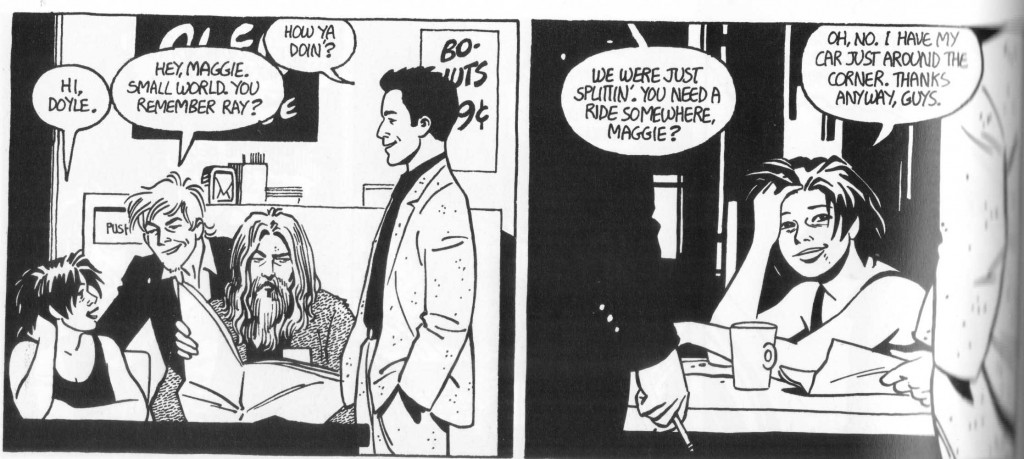
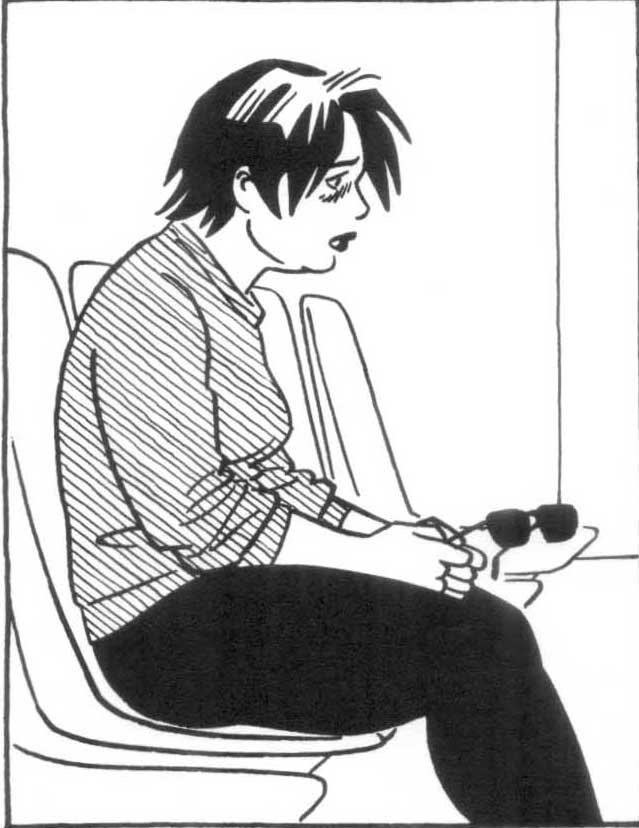
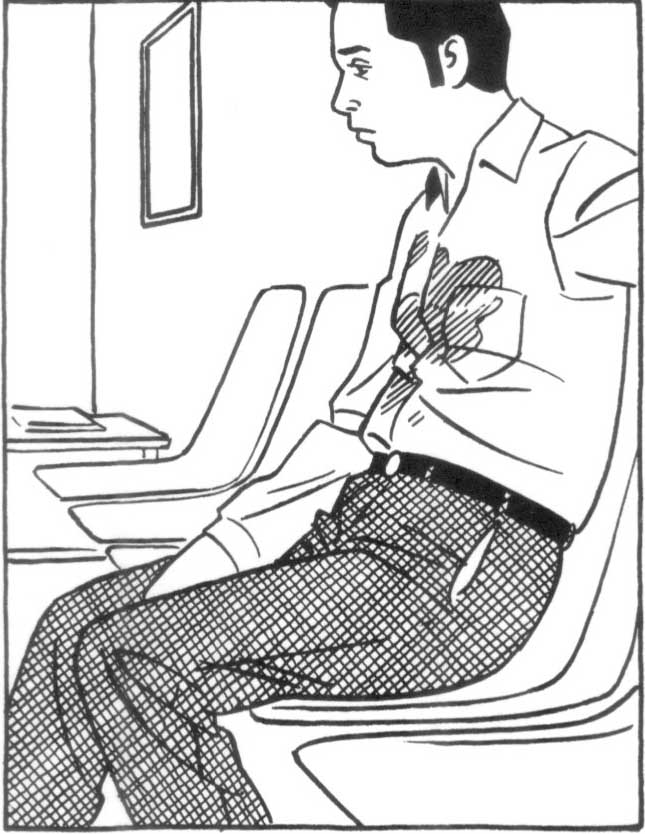
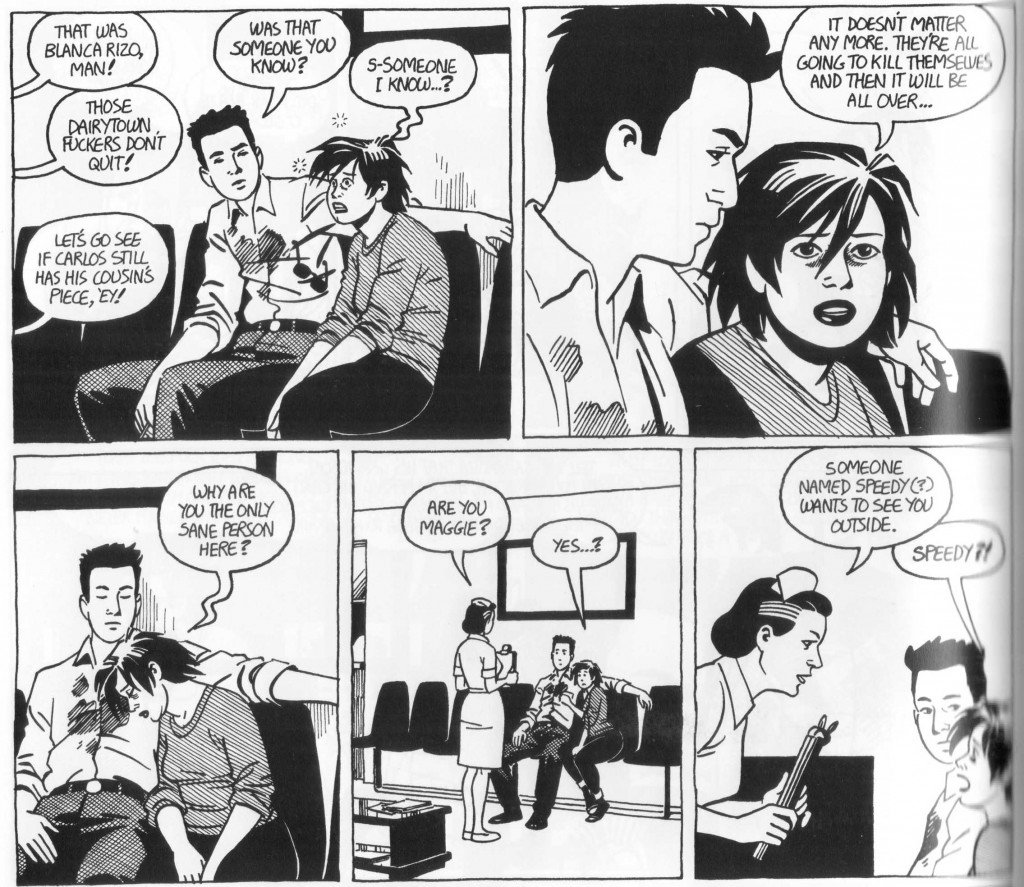

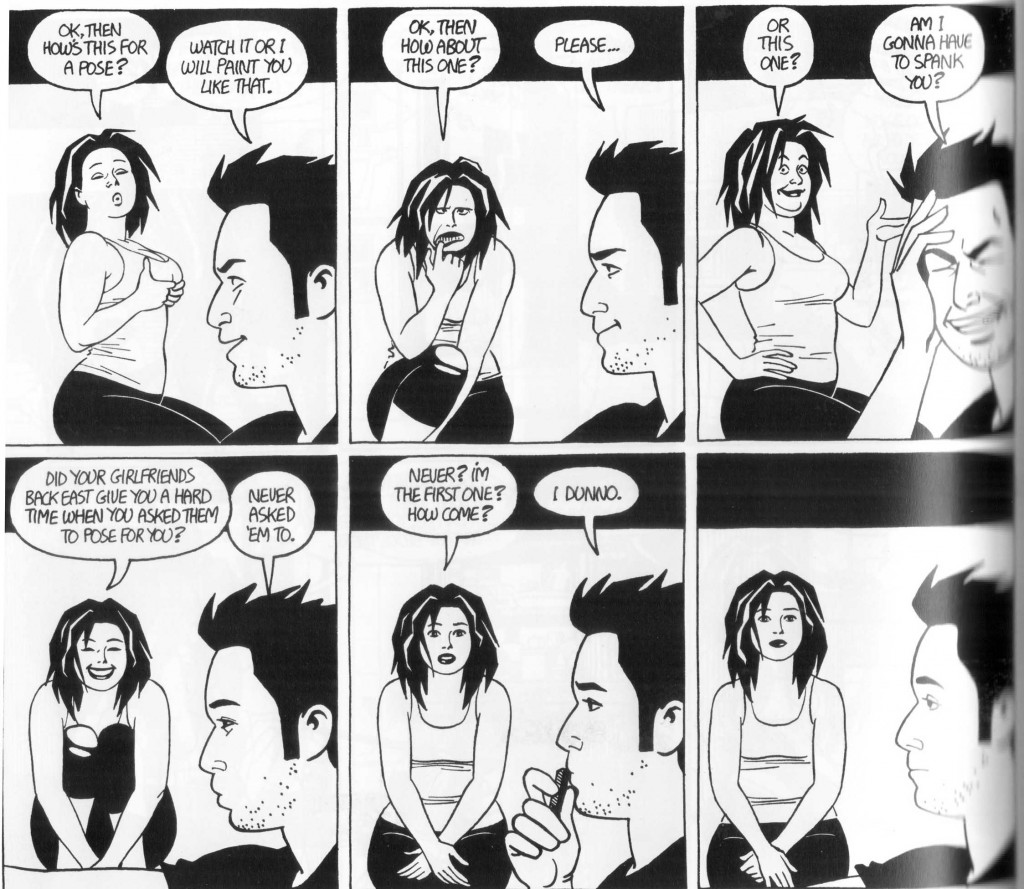




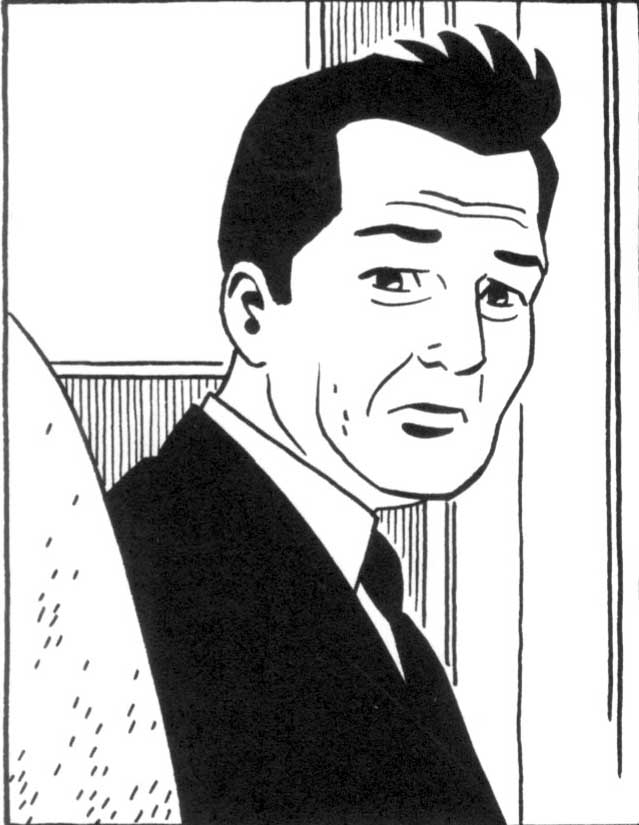
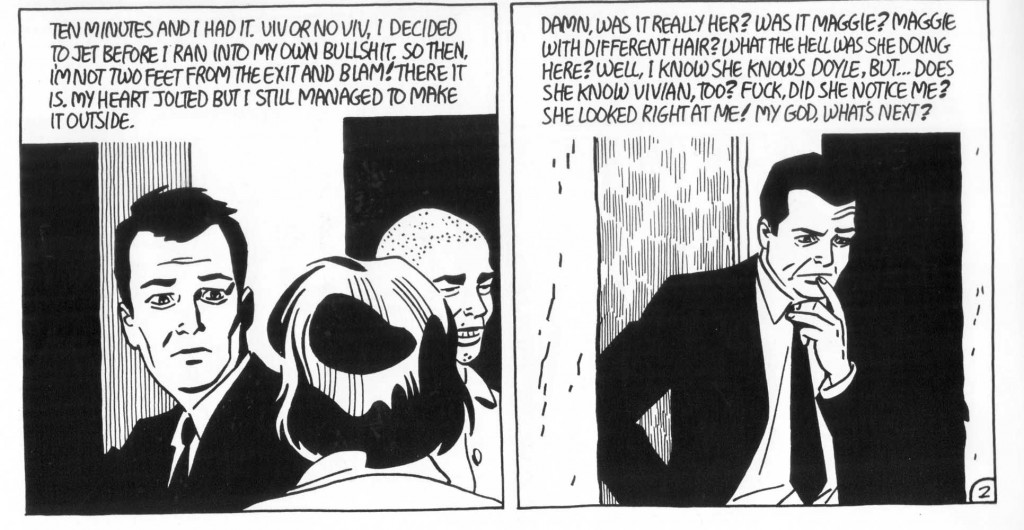

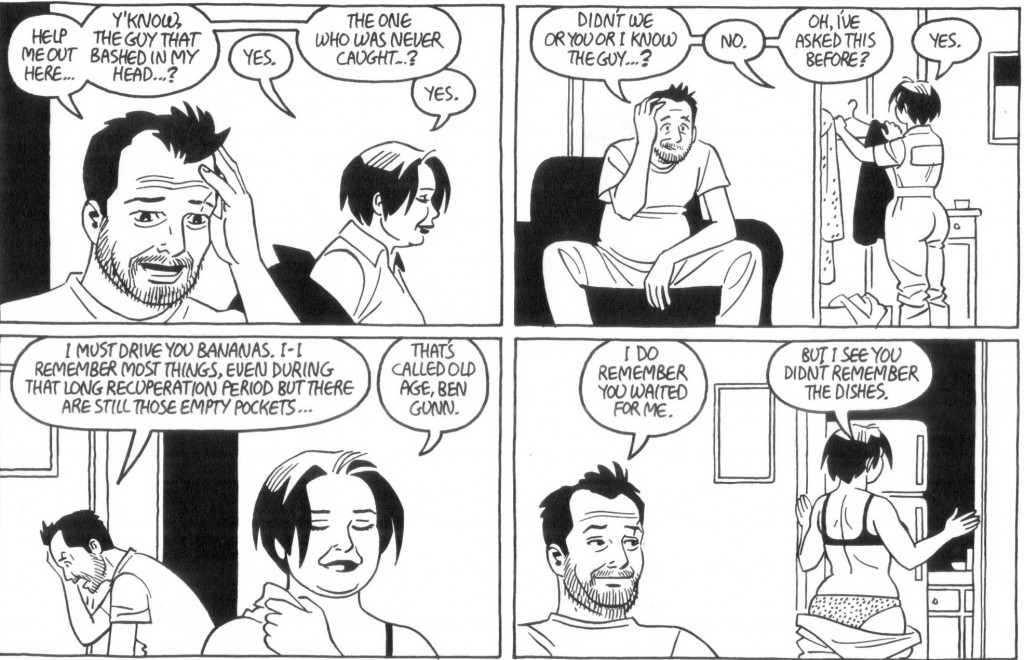
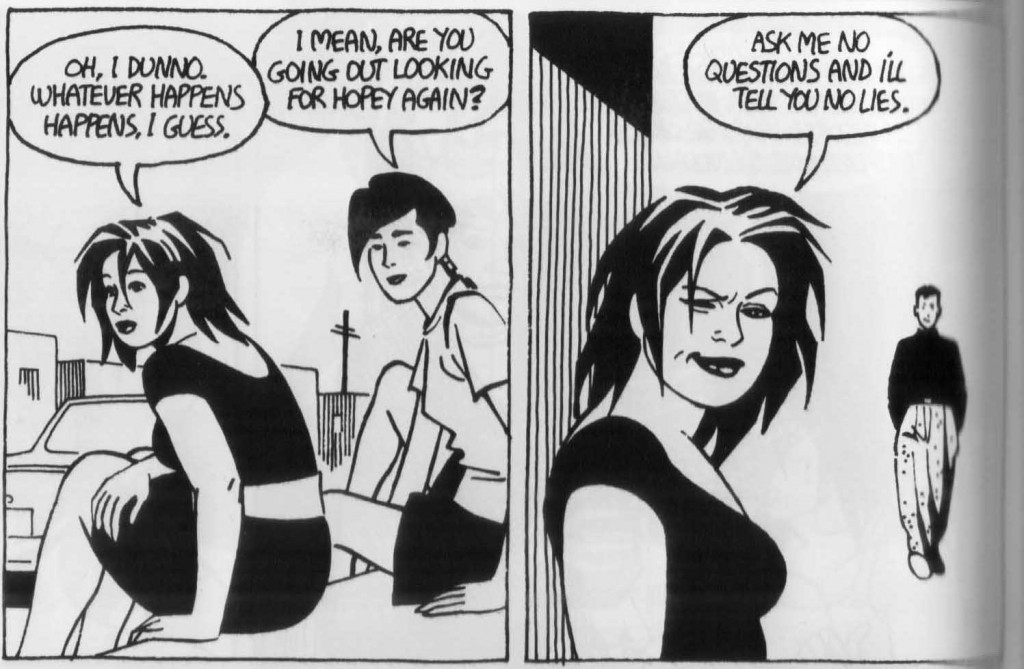
A remarkable, dazzling study…!
Thanks, Mike.
I do definitely get a sense from this of what the appeal is…but at the same time, the appeal is so interlaced with knowing the whole story and with rhymes and rhythms within that sotry, and (perhaps?) with the way the story unfolds over a long period of lived time, it still feels pretty daunting for someone like me who didn’t grow up with it. Still, I’m more inclined to give it a shot after this than I was before….
I think your first point is definitely a hindrance to enjoying the current issues of L&R. They would be a bad place to start. But haven’t you found the earlier issues somewhat disappointing as well? Derik recommended “The Girl from Hoppers Collection” if I remember correctly.
As for your latter point, we’ve discussed this before via email. I think the comic does get an extra lift from it’s gradual unfolding over time. There’s something different about seeing a character changing and growing old as opposed to being told that like in a novel like “Love in the Time of Cholera”. That extended and almost real time change seems to add to the aesthetic experience. So this kind of serialization is almost like a performance, the experience of which can’t really be reproduced when you read the collections all at once. To take a more commercial example: Was Watchmen slightly more interesting when you read it as it was coming out (with all its very helpful delays) as opposed to a single volume in a single night?
All that’s true…but if you get the first Locas hardcover…and struggle through the first third in a day or so…then it’s smooth sailing and enjoyable. I didn’t start until the hardcovers came out (2004?)—and read through it in a couple of days. After that I was hooked and tracked it all down.
You know, under normal circumstances, I don’t think you could get a stronger recommendation than that for “new” readers. But we all know that the Berlatsky brothers have agreed to disagree on most things pertaining to books and comics…
I don’t know that I liked Watchmen more serialized than in one go…it’s all one fairly self-contained story, though….not sure the experience is that analogous….
I looked at Eric’s first Locas hardcover, I think, and didn’t find it that appealing…but try try again….
Hey! We both like Watchmen!
A very nice essay! I was thinking of doing what Suat did here — going back and scanning all the old sequences that Jaime alludes to in that remarkable two-page spread. So I’m glad to be spared the trouble.
A few notes: Panel two is from “Return For Me” earlier in that issue — see page 67, panel 7. And I’m not sure that panel 3 is from “The Death of Speedy” era — I’m not sure which earlier story it is alluding to — any suggestions would be welcome!
As for reading Jaime, I agree with Eric that it’s just a matter of making your way through the early stories (which aren’t bad, just lightweight). It probably is the case that the longer you’ve lived with the characters the more resonant the theme of time is, but I’ve known readers to come into Locas fairly recently and still get a lot out of it — in fact, given all the linkages between the past and present, there are some advantages to reading the stories in quick succession — it’s easier to make connections between the stories.
Hi Jeet, nice to see you in these parts.
Yep, Panel 2 is from “Return to Me”. I’m just conflating “The Love Bunglers”, “Return to Me”, and “Browntown” – combining them into one long story known as The Love Bunglers. I suppose that’s the way they will be reprinted in TPB form.
Panel 3: Yes, the panel in question is not from the same period as The Death of Speedy. I’m just trying to create a connection between Letty’s death and Speedy’s death (just like at the end of The Death of Speedy). Actually, I have no idea where that scene comes from. I don’t think that particular “blank” in the story has been filled in yet. Maybe it’s been alluded to in conversation?
“…there are some advantages to reading the stories in quick succession — it’s easier to make connections between the stories.”
That sounds very logical. I wonder if it’s true. Maybe some new reader can fill us in on this.
Most of the time, I actually “talk” to people who read L&R in the 80s and then gave up on it. The market for Jaime’s art seems to be predicated on this. I think a lot of people gave up on L&R around the time of Wigwam Bam (I say this even though it’s one of my favorite books).
Yeah, Panel 3 is a real mystery since every other panel on those pages can be located in some earlier story. I’m wondering if Panel 3 isn’t an allusion to a scene that Jaime will draw it into a future story.
Like the best cartoonists, Jaime teaches us to read in a new way, to read visually as well as narratively. One of the strengths of this post is that it shows how Jaime’s visual storytelling works, the way his visual allusions to earlier stories carry with them memory traces and emotional resonance.
About new readers, I’ll just mention that my partner started reading the Locas stories only a few years ago in the new squat TPB format (Maggie the Mechanic, etc.) and enjoys them a lot. I actually think the new TPB are the best way to read the stories.
For example, I agree that Wigwam Bam is a high point but it gains from being collected with Chester Square/Bob Richardson sequence of stories in Perla La Loca. Taken together, these stories make an extremely powerful “graphic novel” within the larger Locas sequence. If I had to point to two highpoints in Locas, they would be Perla La Loca and the current Browntown/Love Bunglers sequence.
It’s true that Jaime and Gilbert lost many readers when they were doing long serialized stories in the Love and Rockets volume 1. But my sense is that many of these readers have returned and also there are quite a few new readers. One person who can perhaps speak to this is Sean T. Collins who is a relative newcomer to Love and Rockets but has become an important critic of their work.
About Watchmen: I didn’t read the chapters as they were serialized but I know people who were reading them at the time and there was a definite excitement they had in reading month to month which can never be replicated by the codex version. I remember people raving about issue after issue and wondering where Moore/Gibbons were going to go with the story. I only read Watchmen when it came out as a book, which I often regret, although of course there is real strength to how it works as a single volume, being one of the first graphic novels that really works as a single coherent (too coherent, I often think) work of art.
My reading of L&R is completely random. I came to the series late, read much of it out of order, have yet to read all of it. and find all of it very easy to follow as stories. I’m sure my appreciation of it would be greater if I had the whole fabric, but just to be clear these do work as stand alone stories. The fragmentary nature of my reading probably distances me from being affected on a deep emotional level that people who have been along for the ride from the start feel. People often have an emotional engagement with things they have bonded with at a young age, even things which have little value aside from comfort.
These are really honest efforts, and very well executed on every level. It’s hard to imagine anyone giving them a careful reading not wanting more.
Jeet: “….If I had to point to two highpoints in Locas, they would be Perla La Loca and the current Browntown/Love Bunglers sequence.”
Interesting. Didn’t know about the contents of Perla la Loca. I have a place in my heart for short books like Ghost of Hoppers as well. That’s the book which rekindled my interest in Jaime’s work. I do think the 2 books you mention provide a strong contrast to each other. While Browntown/The Love Bunglers seems very directed and almost “classical” in structure, Wigwam Bam seems almost “directionless” (which is perfectly in keeping with its theme). It seems to be much more concerned with place and atmosphere. There should be more comics without a definite beginning, middle, and end.
Is Sean a newcomer to L&R? Maybe you mean he’s one of the “returning” readers. From his reviews, I was under the impression that he was initially dismissive (maybe he started reading in the late 90s??) before being converted to its merits in the last few years. I have this vague memory of him writing a negative review of L&R in TCJ.
Holly “…but just to be clear these do work as stand alone stories… It’s hard to imagine anyone giving them a careful reading not wanting more.”
Not so hard to imagine actually. Quite a few naysayers on this site.
I wonder if you’re the exception that proves the rule. The L&R reader’s guides (I think there are 3-4 of them out there at least) which I’ve read all seem to indicate a preferred sequence of reading. Noah definitely seems to have trouble with the collections read out of order (but that might be peripheral to his problems with the text). For example, I thought that Ghost of Hoppers was quite depressing in its treatment of Maggie (there was a sense of hopelessness for much of its length) but Noah felt it was “meh”.
————————-
Jeet Heer says:
…About Watchmen: I didn’t read the chapters as they were serialized but I know people who were reading them at the time and there was a definite excitement they had in reading month to month which can never be replicated by the codex version. I remember people raving about issue after issue and wondering where Moore/Gibbons were going to go with the story…
————————-
I was one of hose fortunate ones; and the added excitement from “month to month” reading was incredible! What a thrill as each ish came to an end, the “nuclear clock” on the back cover ticking ever closer to Armageddon, the blood flowing under it more copious; what anticipation of the next issue…
Can relate to those “crowds in New York [which] awaited a vessel newly arriving from England [bearing the latest installment of The Old Curiosity Shop] with shouts of ‘Is Little Nell dead?’…” ( http://www.victorianweb.org/authors/dickens/dickensbio4.html )
As far as Jaime’s growth as a comics creator, what a contrast between those “previous endings” to the Locas tale shown above, almost “Hollywood” in their cute, neat cheeriness, and the one in the final page of The Love Bunglers; with two life-battered, middle-aged folks, finally having found a haven in each others’ arms…
(Which moved me to tears, as did the first Jaime page in this L&R issue; I think being a certain — older — age adds significantly to making these so deeply moving.)
I agree that reading Watchmen month to month was a different and thrilling experience. I was 13 though…so that may have had something to do with it.
Teaching Perla La Loca next week…so we’ll see what they make of its directionlessness…
I got the first issue of L%R when it came out and thought it was interesting. Then nada for many years. Then I saw Jaime’s NY Times strips and started colecting them. When I had them all I read it and went….hmmmm, this guy REALLY knows what he’s doing. Then I found one of the older collections of L&R at Strand. “Spring 1982” was the clincher. Then, Ghost of Hoppers and with that I was hooked. I got Locas and all of the other collections. It’s now some of my favorite comics ever. So, you didn’t have to “grow up” with it, Noah. Take the dive.
Well, I did sort of take the dive and didn’t like it much…but like I said, I can try again….
Pingback: The annotated ‘Love Bunglers’ | Robot 6 @ Comic Book Resources – Covering Comic Book News and Entertainment
Pingback: Carnival of souls: Special “Alternative Comics Mount Rushmore” edition « Attentiondeficitdisorderly by Sean T. Collins
Beautiful job. Thank you.
I’ve been thinking of “Ghost of Hoppers” and “The Education of Hopey Glass” as leading to “The Love Bunglers” in a kind of sweep, but it’s good to be reminded just how far and wide the roots spread.
Thanks, Ray. Let me/us know if you decide to write an article on Love and Rockets concerning those earlier books.
Pingback: The Love Bunglers: « Yurt16
Pingback: Mindless Ones » Blog Archive » “You know Judge Dredd? Well, he just hit on me!” – Thought Bubble 2011
Maybe you could help me with something I’ve been doing my nut over. The guy that Maggie goes on the blind date with (‘incorrigible’) – have we seen him before, and if so, who is he?
Pingback: Episode 38 – Swamp-Butt Summer « The Boy Howdy Podcast